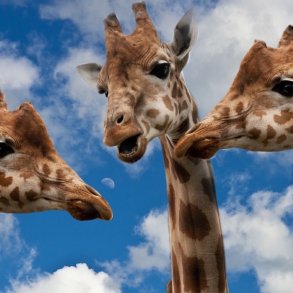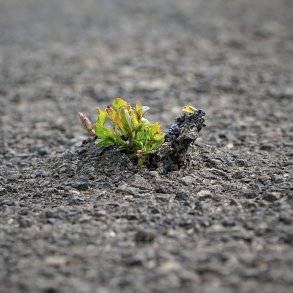Originally posted by Celine McKeown at Future Considerations
Here at Future Considerations, we are engaged in an inspiring and challenging exploration of how to practically apply the insights from the work of Frederic Laloux and his best-selling management book “Reinventing Organizations”. This exploration is taking place both internally, as we evolve to the next stage of ‘teal’ organising at Future Considerations, and externally with teal-orientated clients, practitioners and collaborators. The term ‘teal’ refers to the new paradigm or level of consciousness from which the leaders and next-stage organisations operate.
Wherever the exploration is taking place, there’s one thing in common: there’s some big questions being asked and new ground being charted. One such question is what does Wholeness mean in the context of ‘teal’ organising?
Wholeness is one of the three breakthroughs identified in Laloux’s book (Self-Management and Evolutionary Purpose being the other two). The Reinventing Organizations wiki highlights three lenses that we can use to understand Wholeness:
- Wholeness for Individuals: What is wholeness for individuals within their organizational context?
- Wholeness for Organisations: What is wholeness for the organization as a living system, an organism in its own right?
- Wholeness in the World: What does wholeness mean in its external being – its connection with planet and society?”
My colleagues and I have had some really interesting conversations internally, and this blog post is both a culmination of our thoughts and a focus on the first lens: Wholeness for Individuals.
What is Wholeness?
Laloux says “Historically, organisations have always been places where people showed up wearing a mask… people often feel they have to shut out part of who they are when they dress for work in the morning…They require us to show a masculine resolve, to display determination and strength, and to hide doubts and vulnerability.”
Laloux then goes on to explain that teal organisations have developed a consistent set of practices that let their people “bring all of who they are to work” – including the “emotional, intuitive and spiritual parts of ourselves.” These are practices that enable us to bring our whole selves to work- hence the term ‘wholeness’.
Watch Laloux talk about Wholeness.
So far so good, but we’d be naive to think that ‘teal’ wholeness can be achieved by simply introducing a selection of practices such as moments of silence at meetings, storytelling, or bringing your dog to work. There is a danger that people may view these practices like a check-list: “if we bring in a handful of wholeness practices into our organisation then the ‘wholeness’ box is ticked”. While these practices are definite enablers for wholeness, there remains many questions such as:
- How do we understand what wholeness means not just for ourselves, but also for others?
- How do we know if our sense of wholeness is shared?
- How do we select and evaluate our ‘wholeness’ practices?
- How do we find a common language and common points of reference to discuss such a deeply held personal experience?
- How do we enable groups and individuals to work through this?
Wholeness is about being human.
Wholeness is not another word for happiness at work. Happiness is part of it but not all of it. Wholeness includes our shadow side, when we are not at our best (e.g. how do I share that I feel angry, jealous, anxious or stressed?). Laloux admits that “striving for wholeness is no easy task”.
The challenge for ‘teal’ organisations is to create a safe space for us to be vulnerable and have very real and authentic, sometimes difficult, conversations.
George Por, reminds us that “Being human is much more than having the right to be vulnerable. It is also, and probably just as importantly, the real possibility to express at work the multiple dimensions of our creative self.”
Wholeness is both a personal and collective experience.
We each derive our unique sense of what it means to be whole. And this personal experience exists within our collectively held experience of wholeness at an organisational or societal level. Laloux explains in his book that people, organisations and societies are evolving through different levels of consciousness, also known as action logics or levels of vertical development.
So how we experience the world is related to the stage of development we are at personally and collectively– what seems subjective and individual is also a step in a wider unfolding of human development.
Julia Fell says that “If individual wholeness is about being who you are, bringing your specific gifts and talents, according to your own specific work/life demands, in your own style, then this represents a challenge for organisations. The ‘teal’ organisation has to work with individual expressions of wholeness and ensure that that contributes to the wider interests of the organisation.” This is about finding the right balance between individual and collective needs, the connection between individuals and the organisation’s evolutionary purpose.
Wholeness –can we evaluate it?
How do we have conversations about wholeness? Imagine your organisation or team introduces a new wholeness practice. How will you know it’s working for you and others? How will you even begin to find a common language to share your experiences beyond “It works for me” or “I don’t like it”.
I am curious to investigate what tools or frameworks are available to us. One such tool is the Map of Meaning developed by Professor Marjo Lips-Wiersma and Lani Morris.
It provides a common framework for people to work through what gives them meaning. Working with the map enables us to ask (and importantly to easily communicate the answers to) 3 key questions:
- What’s important to me as a human being?
- How do I know I’ve got it? (or lost it?)
- What can I do to get it, get it back?
Whilst I don’t know if wholeness is the same as meaning, my sense is that this would be a good start to some rich conversations about how we experience wholeness at work. And how we evaluate it.
Wholeness is not a state or a destination, but a process.
It’s important not to confuse experiencing a sense of wholeness with the need to have a clear sense of personal purpose. (e.g “I will experience wholeness when I have reached my purpose in life”). What is important is to know when you are experiencing wholeness at work, in the same way that you know when you are not experiencing it.
And to actively take responsibility (personal agency) for your own experience of wholeness, rather than waiting for ‘the organisation’ to make it happen.
Professor Marjo Lips-Wiersma says that “All of us, but particularly those of us who have been in disempowering organisations for a long time, find reasons to not step into responsibility, to not be proactive, to not step forward, to not challenge, and to not be fully alive (at all times or in all spheres of our lives). This is the “comfortably numb” phenomena or the “I’m not putting myself out there again, that was too painful” phenomena.”
Next-generation ‘Teal’ leaders
In a self-organising world having a sense of who you are, what motivates you and what you offer (often described as connecting to your source) links back to the important notion of personal agency.
In the future, ‘teal’ leaders will be those who deeply connect to the organisation’s evolutionary purpose, find their own authentic leadership based on who they really are and a clear sense of what their real gifts to the world are.
This calls for a shift in their developmental journey – from an ego-centric to a world-centric world view.
If you are interested in starting your journey of self-exploration into your own unique point of impact on people and planet, please contact me at [email protected] for more information about our coaching & mentoring programmes for next generation ‘teal’ leaders.
Equally we’d love to hear your stories of wholeness, so please feel free to comment below.
(See valuable comments on original webpage.)



